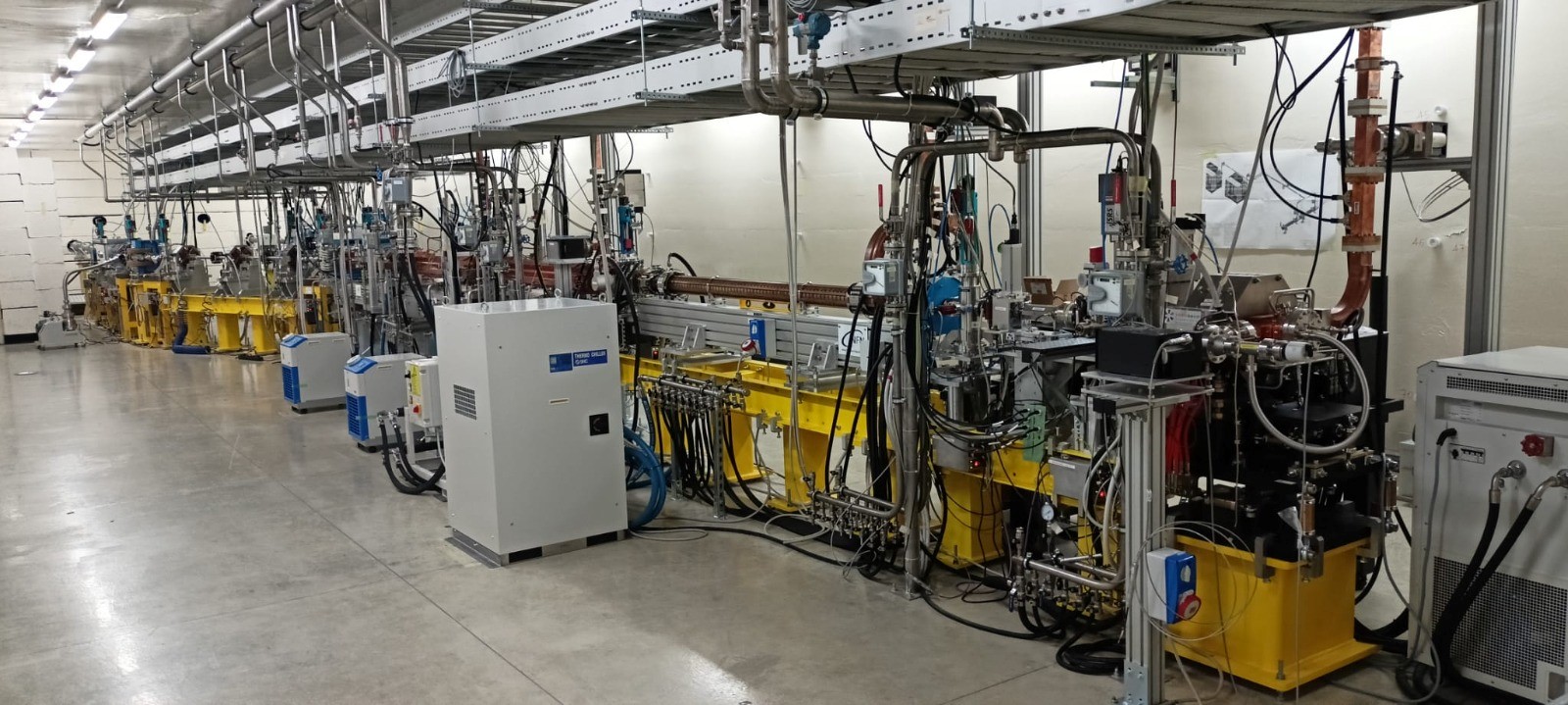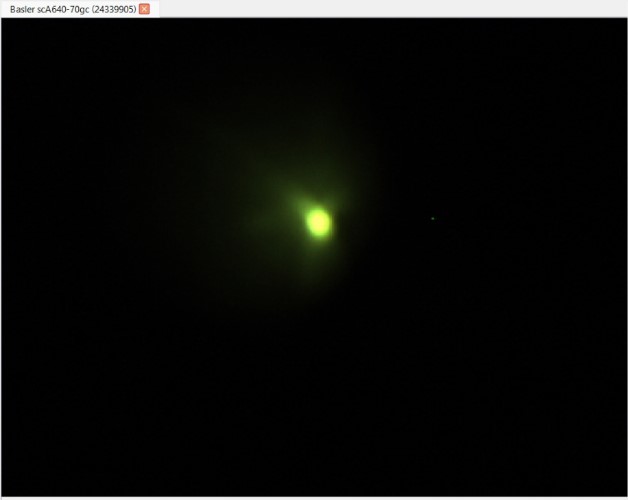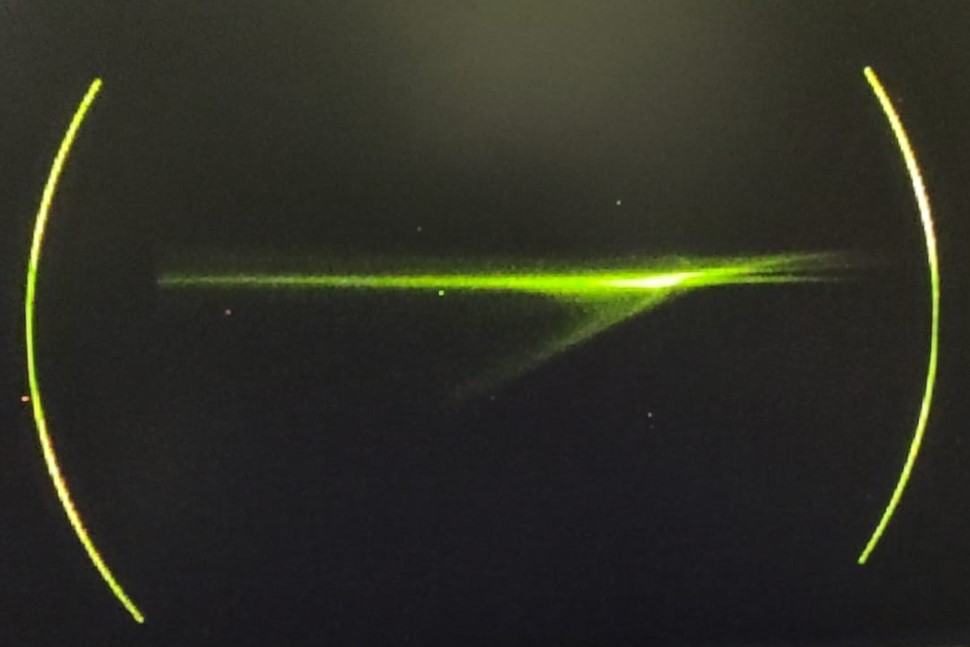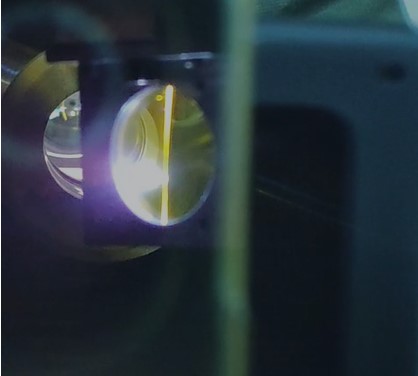
Photo of the complete STAR accelerator inside the bunker. From right to left: the electron source, the RF photoinjector, followed
by the three accelerating sections and the Compton interaction chambers.
The first spark of the STAR project (Southern Europe Thomson Back-scattering Source for Applied Research) was lit at the University of Calabria (UniCal) marking the birth of a new research infrastructure that promises to revolutionize the way high-energy photons are generated.
Developed by INFN (Italian National Institute for Nuclear Physics) as part of its Technology Transfer program, STAR is a compact light source based on the inverse Compton scattering phenomenon, capable of producing X-ray photons up to 350 keV. It is the first Inverse Compton Scattering (ICS) source of its kind in Europe, joining the ranks of those already operating in Munich (MuCLS) and Paris (ThomX).
During the first testing phase, the system successfully generated and accelerated high-brilliance electron beams up to 61 MeV, ready to interact with a powerful 500 mJ laser. This interaction is the core process behind the generation of inverse Compton photons.
The true strength of STAR lies in its compactness: an apparatus much smaller than large synchrotron light sources, yet with enormous potential. Designed to be installed even in university campuses and developing countries, STAR represents an economical and accessible model for advanced research.
“This first result, truly exciting, confirms the soundness of Unical’s choices and paves the way toward the first light delivery to users, bringing the STAR laboratory ecosystem to full operation in synergy with the upcoming opening of two beamlines,” said Prof. Raffaele Agostino of UniCal, scientific coordinator of the source, in close collaboration with Prof. Pasquale Pagliusi and Prof. Enrico Tassi.
The construction of the infrastructure was coordinated by INFN’s Frascati National Laboratories, together with the INFN Section of Milan and the LASA Laboratory, each contributing numerous experts and technicians. Among the key contributors are Luca Serafini, Andrea Ghigo, Luigi Pellegrino, Attilio Sequi, Luigi Faillace, Alberto Bacci, Adolfo Esposito, Sandro Vescovi, Umberto Dosselli and Speranza Falciano — INFN personnel who over the years have played technical, scientific, and management coordination roles.
Within our INFN Milan Section more colleagues gave relevant contributions to the STAR project in the course of its 12-year duration: Vittoria Petrillo, Ezio Puppin, Francesco Prelz, Illya Drebot, Marcello Rossetti, Sanae Samsam, Marcel Ruijter, Francesco Broggi, Dario Giannotti. The local administration carried out several legal and contractual tasks connected to the execution of the national contract binding INFN and UniCal during the period 2020 to 2025. We acknowledge in particular Angela Campanale and Ekaterina Kornioukhina for their effective and prompt administrative support of the national project leader tasks and commitments.

Spot on the YAG:Ce target of the electron beam (≈1 mm diameter) at the exit of the RF photoinjector.

Image on the YAG:Ce target of the electron beam accelerated up to 61 MeV and sent into the interaction chamber for the
generation of inverse Compton photons.

Image on the YAG:Ce screen of the high-energy laser beam (500 mJ), with a pulse duration of 5 ps and a repetition rate of 100 Hz,
at the interaction point with the high-brightness electron beam.








 Subscribe to RSS Feed
Subscribe to RSS Feed